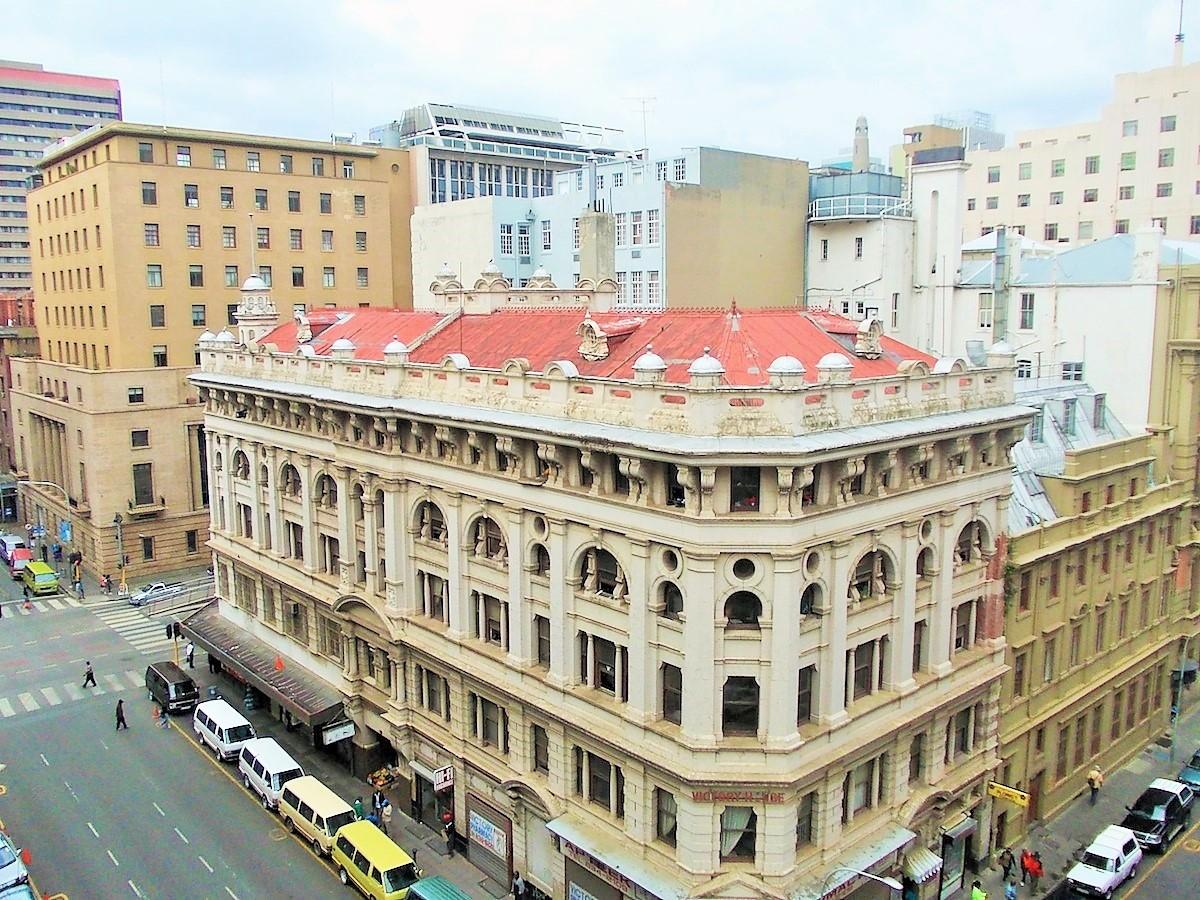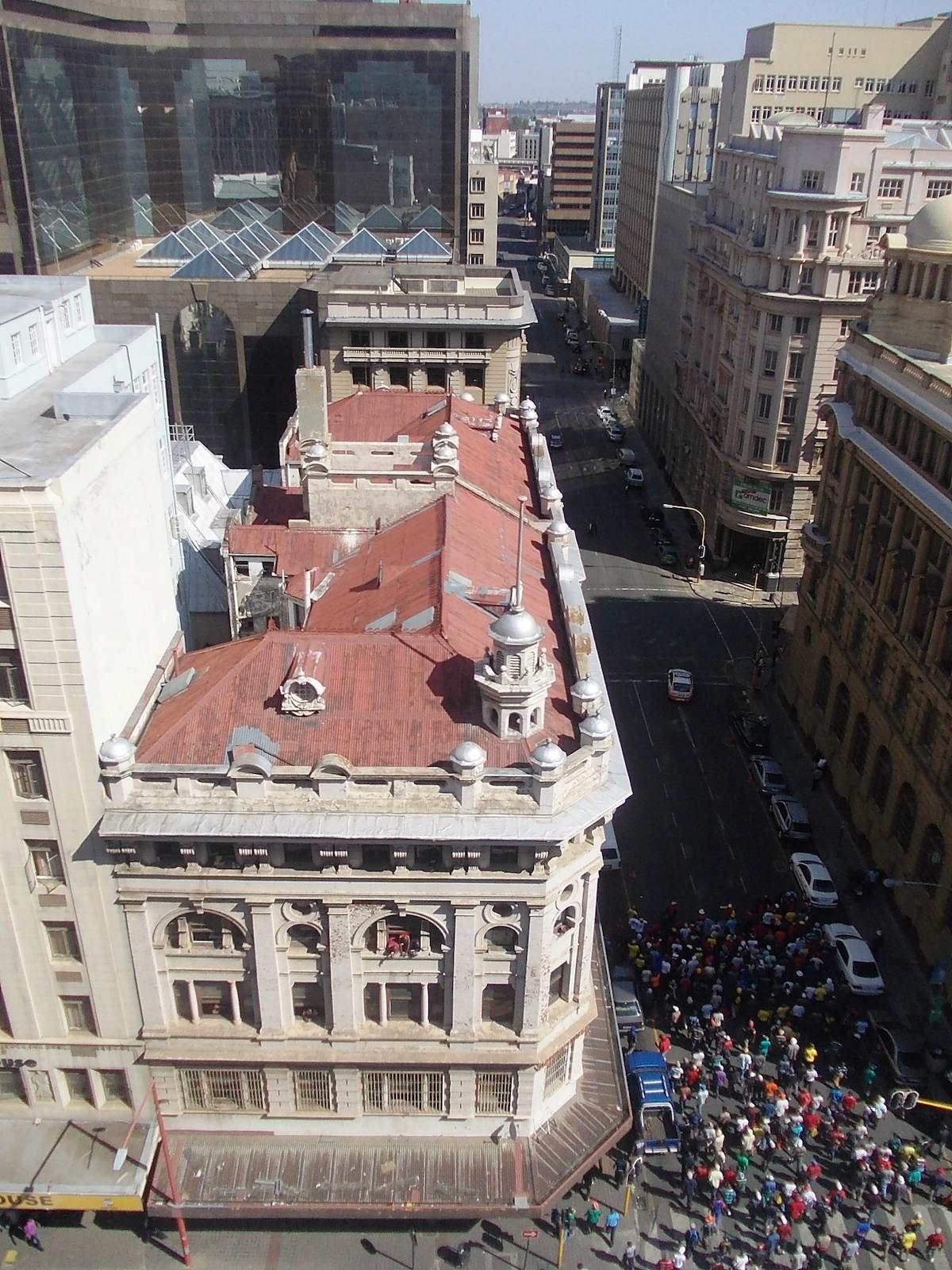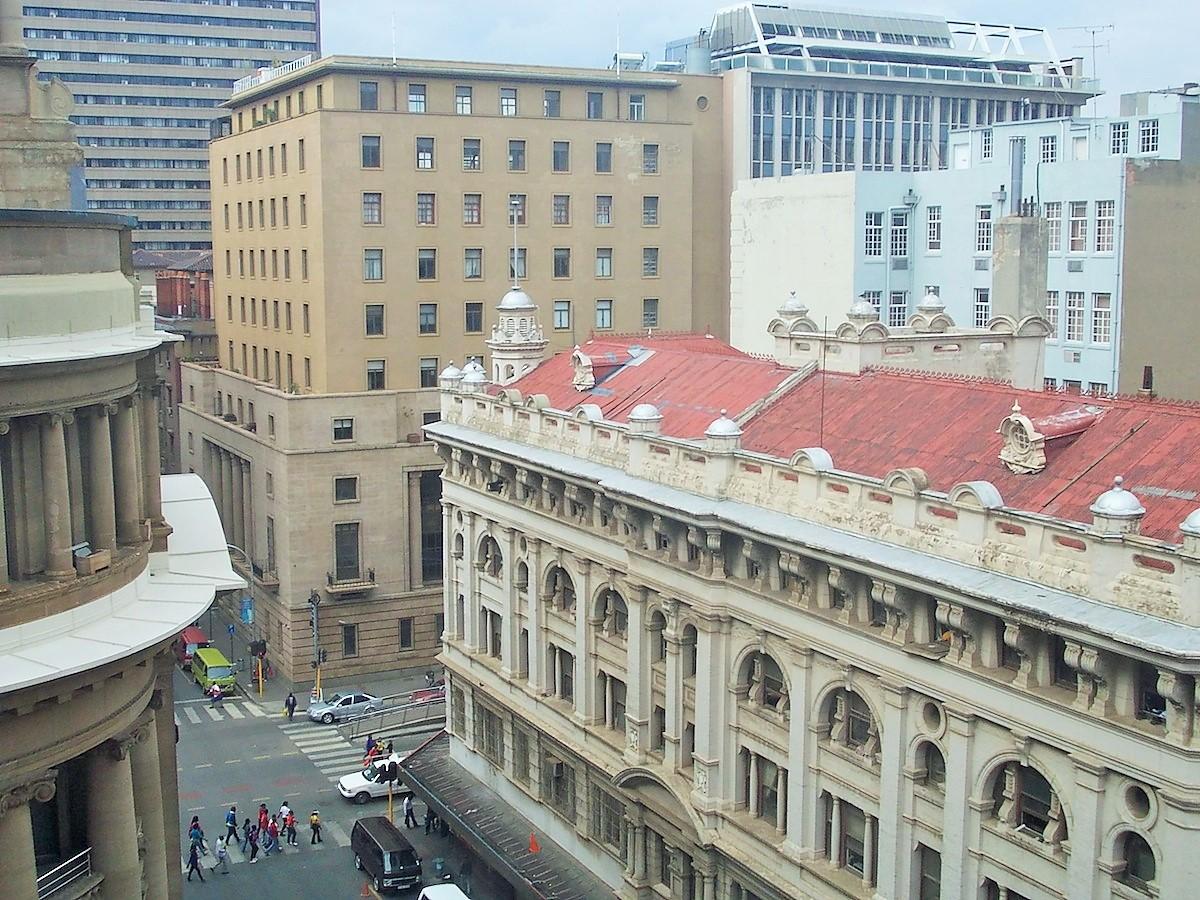
Disclaimer: Any views expressed by individuals and organisations are their own and do not in any way represent the views of The Heritage Portal. If you find any mistakes or historical inaccuracies, please contact the editor.
Victory House, originally known as Permanent Buildings, is located on the historic corner of Harrison and Fox Streets in downtown Johannesburg. The passages below, taken from the official history of the Perm (1983), reveal part of the story behind its design and construction. The building is of great historical and architectural significance and is famous for having Johannesburg's first lift.
"…four firms of architects were approached to send, in competition, designs with an approximate cost not to exceed £8000 - £9000. The building was to comprise a basement and three storeys. The accepted design was to receive a reward of 25 guineas (to be deducted from the regular fees if the building was proceeded with) and the next best design a reward of ten guineas.
Emley and Scott, W. Leek, W.H. Stucke and R.L. McEwat submitted their designs by the middle of July and Stucke’s was unanimously accepted by the Board as the winner. But in view of the merit of the plans sent in by Emley and Scott and W. Leek, each of these firms receive ten guineas. Whether it was Stucke’s idea or the Local Board’s (and one suspects the architect) he was asked a month later what adding two storeys and installing a lift would cost – and also the running costs of a lift per month. Lifts were then unknown in Johannesburg. Were the Perm to have five storeys could not one lift serve both buildings, each to bear an equal cost of the erection and maintenance? [negotiations with the owners of the adjacent piece of land had been taking place]
By 22 September amended plans were submitted for one building, each owner being responsible for the cost of its half and sharing the costs of the common entrance hall, stairs, lift, sanitary stairs and the outside lavatories on each floor at the head of the stairs. What is more, the approval of Head Office had been obtained. Despite the joint ownership the building was to be named Permanent Buildings – as all new buildings of the Perm were to be named in the future with the exception of the second building constructed for Head Office.
Victory House (The Heritage Portal)
By November 1895 the two owners had agreed to girders and pillars being ordered direct from England at a considerable saving and the staircase, of cast iron (it was to be the first fireproof staircase in Johannesburg), and the lift were also, of course, to be ordered from England. Everything was set fair to start work the following year – and then the storm broke loose that was to rumble on until the turn of the century brought South Africa into the Anglo-Boer war…”
[There were a number of delays due to the political situation but construction eventually began in 1897]
“There was little difficulty finding tenants [for the new Permanent Buildings]. This was to be the most prestigious building in Johannesburg. Markhams was to complete its five-storey building on the corner of Pritchard and Eloff Streets in 1897 but this building and Permanent Buildings were the only five-storey blocks in Johannesburg. Markhams, despite the attraction of a large clock tower with four faces which could be seen from more than two kilometres distant, had no lift at this stage.
Permanent Buildings (now renamed Victory House) still stands – last survivor of the early prestige buildings of W.H. Stucke, a pioneer architect particularly favoured by the financial houses. The future of Victory House, finest surviving example of Stucke’s work, remained uncertain at the time if writing. [1983]
Among the tenants of Permanent Buildings by the start of the Anglo-Boer War were four foreign consulates. This was to prove a decided asset when war broke out.
Johannesburg’s first passenger lift and accessories cost £1020 and the main staircase and the gates to the elevator £995 – but when Johannesburg celebrated Queen Victoria’s Diamond Jubilee on 22 June 1897 with a public holiday it was known that there would be delays in installing both. Arrangements had been made with the Rand Club to supply electricity to Permanent Buildings – which resulted in a number of delays. There were lengthy negotiations and discussions about a lamp over the main entrance (no street lights then) which continued well into November; but this sort of thing was nothing compared with the non-arrival of the lift and staircase.
Victory House (The Heritage Portal)
Even a safe door placed upside down, which could not be put right-side up, was pale in comparison with a building virtually ready for occupation in November 1897 – and no lift or staircase. The first half of the latter arrived in mid-December and the Society moved in early January together with several tenants. The staircase was not completed until February 1898 and until then tenants had to use the sanitary stairs at the back – provided for the workers who removed the ‘night soil’ (there was no water-borne sewerage for many years).
The lift was opened t the public during the second week in March 1898 from 08h30 to 17h30. The pioneer, G. A. Leyds, was among those who flocked to see it and described in his history of Johannesburg how, in those days, although it had a gate to each floor, the lift itself had no door. Thus the liftman on each trip would call out, ‘Stand well back, please!’ During the first weeks after the opening of the building,’ wrote Leyds, ‘there was a continuous stream of spectators to try or at least inspect the invention.’
Comments will load below. If for any reason none appear click here for some troubleshooting tips. If you would like to post a comment and need instructions click here.


